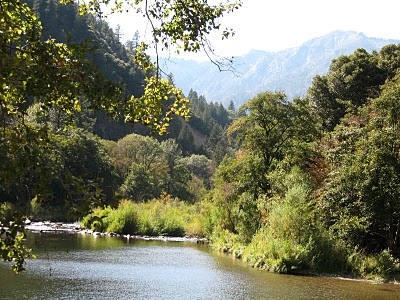
We had a taste of natural, uncomplicated living when we visited Plumas County, California. It’s in the High Sierras, just south of Lassen Volcanic National Park.
It’s California, but not the California many people see on TV and in film.
Everywhere, nature awaits: the sweeping views of Indian Valley, the narrow canyons created by the stunning Feather River, the forests thick with wildlife and resonant with birdcalls.
The boys played with their new friends, a little boy and girl whose parents had the vision several years ago to get out of a congested, overcrowded urban area, and let their children learn in greater freedom, surrounded by nature. The small, experiential-based school they have chosen is not costly; it offers an enormous amount of outdoor education.
The public school my kids used to attend didn’t allow outdoor gardening, nor did the children have access to a stream or brook. Recess was a concrete and mulch playground with a grassy field nearby for soccer, softball, etc. Nature was set up only to be conducive to organized sporting events and the custodian’s large mower. A few times a year, we’d receive a notice in the mail from the district about pesticide application: If you have any safety concerns, please call XXX-XXXX.
My kids’ school day offered 3 recess periods on the concrete/mulch/sports field. Add to that the two times at the bus stop, and you’ve got about an hour and a quarter a day of outdoor time. “What was your favorite thing today at school?” I’d always ask them at 3:30. “Recess!” they’d say. Or “Lunch! ‘Cause after that, there’s recess!”
We all know to take such remarks with a grain of salt. Get enough grains of salt together, though, and you will have a salt shaker.
I started to think about the elementary school where I lived in Denmark: They had an organic garden, and kids were coming from preschools and private kindergartens that let them play outside for huge stretches of time, in rubber boots and thin zip-up snowsuits to keep their clothes from getting muddy. A Danish kid the same age as my sons already had had countless hours more of outdoor programming and overall outdoor time. Yet Denmark’s literacy and numeracy rates are far higher than the U.S.
Has America, the land first of Hollywood, then of drive-thru shopping, and finally of Microsoft, Apple, and the internet, nailed a coffin lid onto our society’s historical connection to the great outdoors?
Looking at today’s children, guided by their technology- and TV-addicted parents, can we not safely say that nature deficit disorder is the new black?
What to do, what to do?
Well, I got a map. And a guidebook. And some cheap bows and arrows for the boys. We drove. Up, up, and away from all the plazas, parking lots, and areas where the land could provide nothing more than a surface for cement foundations, crops, and asphalt.
“We’re gonna be spending some time outside, boys,” I told them. How does camping for two months sound?
“Can we keep these sticks?” they asked, showing me the walking sticks they’d used on our first long hike, and I said yes, provided that they weren’t too long for the car. They fit.


23. September 2010 at 5:15 am
Thanks, Homeschool Ninja! You are my first comment. Thanks for the trackback.